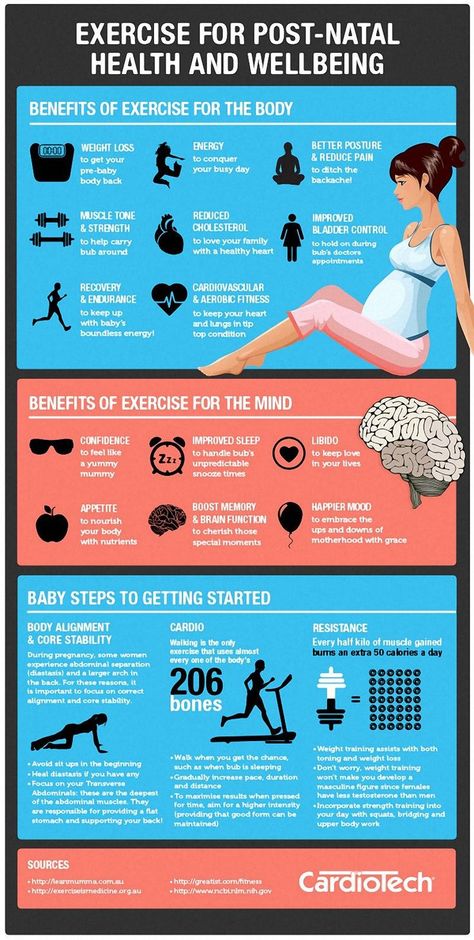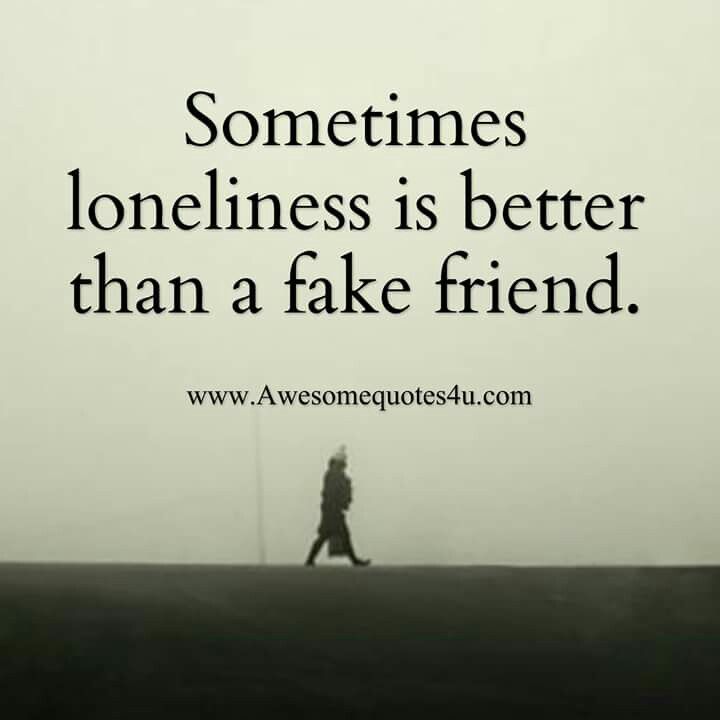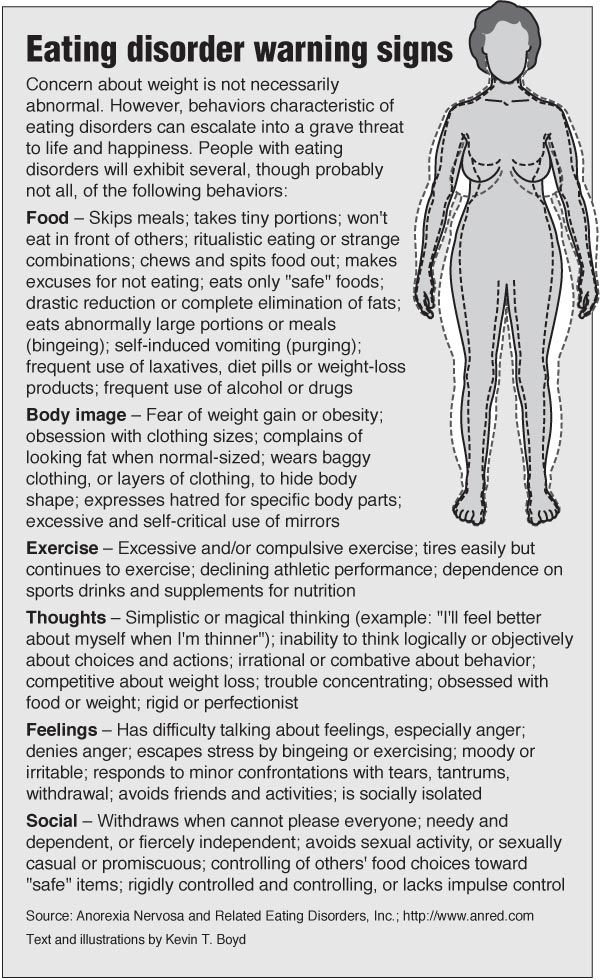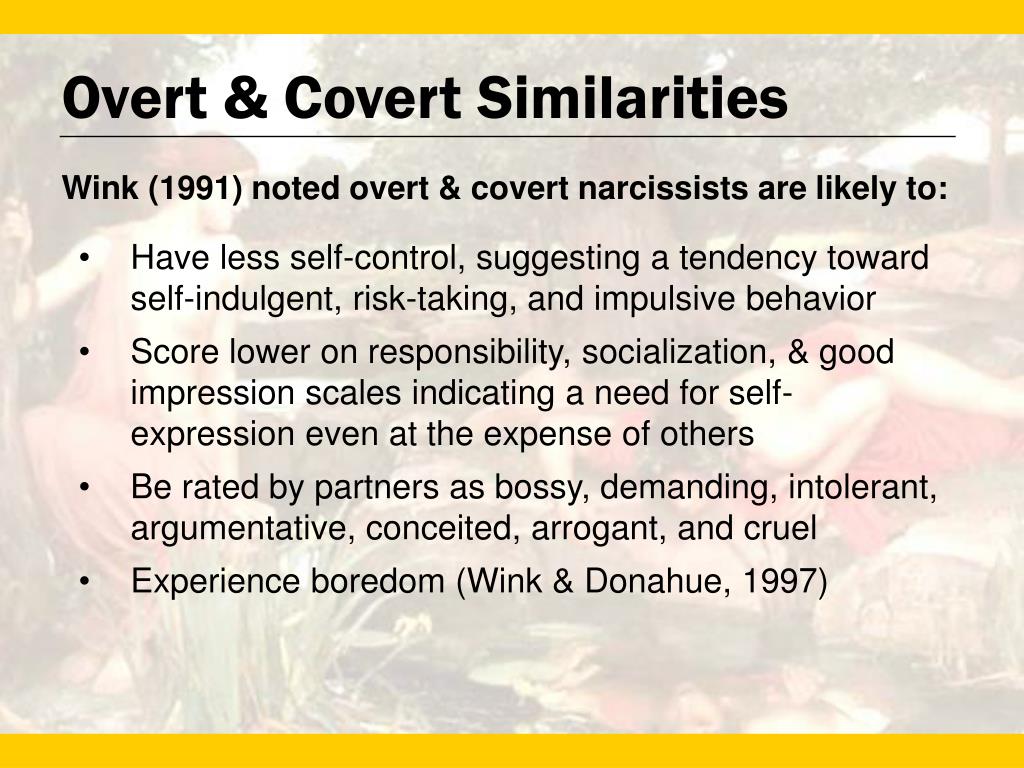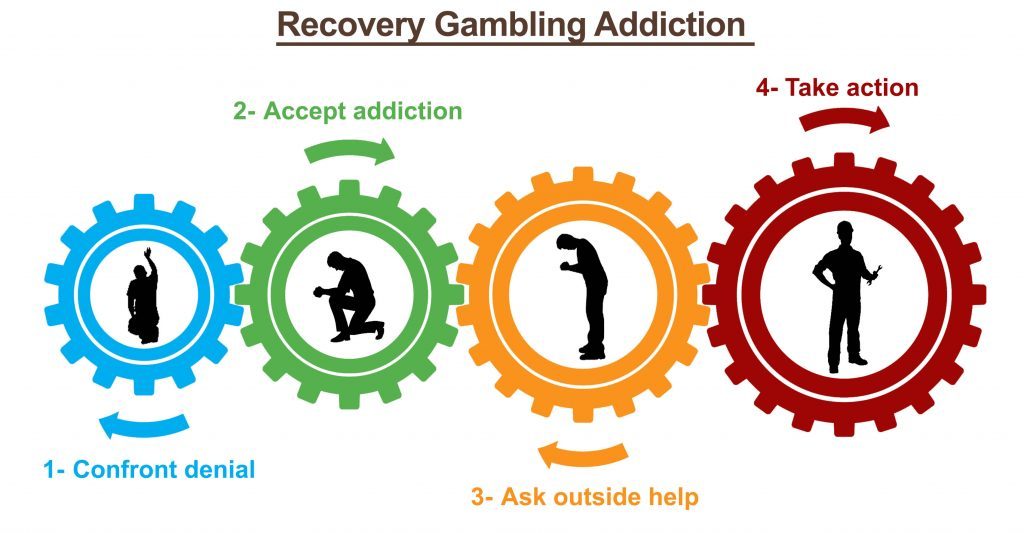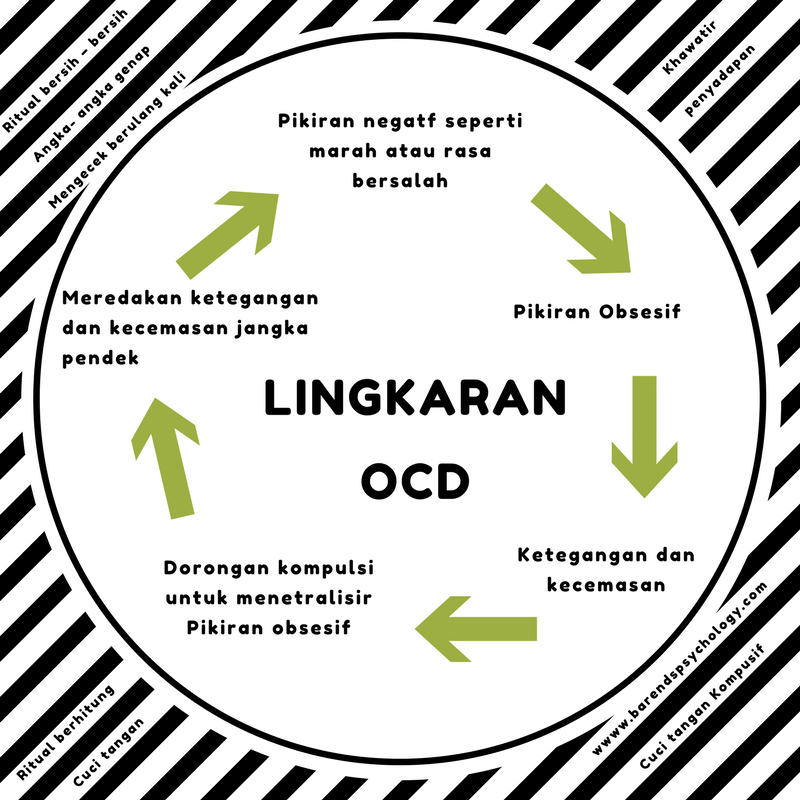Maslow hierarchy of needs triangle
Hierarchy of Needs
Abraham Maslow's pyramidal "Hierarchy of Needs" model is a highly-influential way of organizing human needs from the most "basic" to the most advanced. Maslow's argument is that the most basic needs must be met before people can move "up" to the more advanced needs. It's important to note, however, that Maslow did not argue that each person must have met 100% of each need in order to "move up." For example, a learner can be a little hungry and still learn, but chronic hunger is a problem.
From the bottom up, the needs Maslow advances in this theory are: physiological, safety, love and belonging, esteem, and self-actualization. The needs can be grouped into two categories: "deficiency needs" and "growth needs.
" Most of the pyramid consists of "deficiency needs." These needs are ones that grow worse over time, and as the need gets stronger, the person's motivation to meet the need gets stronger too. Again, someone can be a little hungry and wait for dinner, but a starving person will eat anything and find it to be delicious. Self-actualization, on the other hand, is a "growth need." This is a type of need that isn't characterized by the "lack" of something. Instead, our need for self actualization is intrinsic, and self-actualization itself can be a seen as a cluster of related "growth needs" that can be individual to each person.
Over the course of a lifetime, and even within the confines of a single day, learners can move up and down Maslow's pyramid.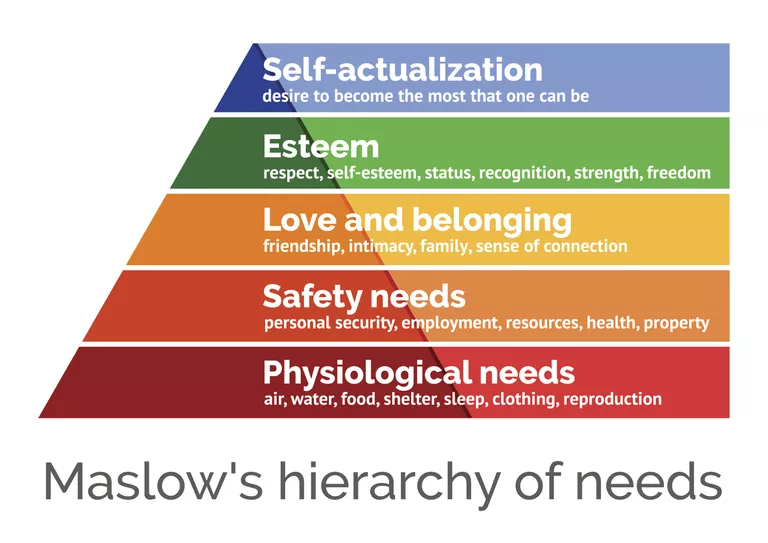 For example, a young student may come to class hungry, eat a school breakfast and do very well in class until an incident with a peer threatens their sense of safety or esteem. By the end of the day, the social pressures may have been addressed by an attentive teacher or caregiver, but the child then is not given dinner at home, and they go to bed hungry. Adults can have their needs disrupted too, both by mundane causes like dieting (!) or more serious disruptions like being the victim of a crime or going through a divorce.
For example, a young student may come to class hungry, eat a school breakfast and do very well in class until an incident with a peer threatens their sense of safety or esteem. By the end of the day, the social pressures may have been addressed by an attentive teacher or caregiver, but the child then is not given dinner at home, and they go to bed hungry. Adults can have their needs disrupted too, both by mundane causes like dieting (!) or more serious disruptions like being the victim of a crime or going through a divorce.
The following short video provides more information and examples about Maslow's Hierarchy of Needs:
Maslow’s hierarchy of needs pyramid: Uses and criticism
Maslow’s hierarchy of needs is a model for understanding the motivations for human behavior.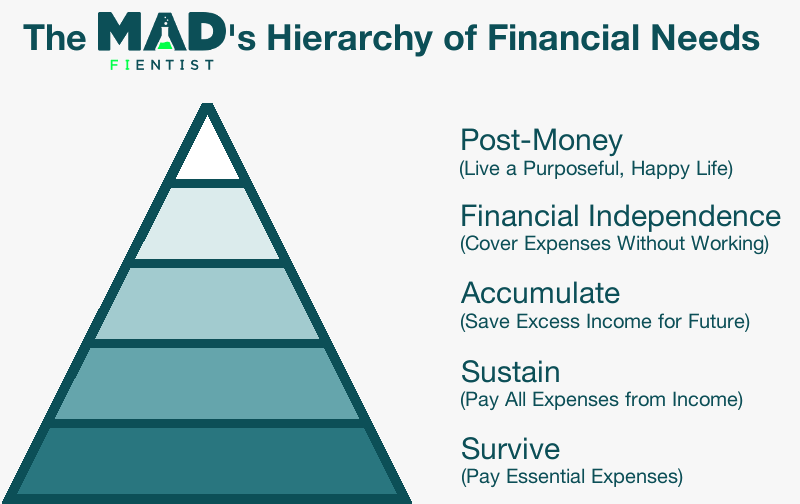 It maps different motivations onto a pyramid, with each level representing a different human need. These include physiological needs, safety, love and belonging, esteem, and self-actualization.
It maps different motivations onto a pyramid, with each level representing a different human need. These include physiological needs, safety, love and belonging, esteem, and self-actualization.
The psychologist Abraham Maslow created this model. He believed that people could not focus on the needs higher up the pyramid until they had mostly obtained the needs in the lower levels. Maslow also felt that fulfillment in life results from being able to meet the needs in all five levels.
Keep reading to learn more about Maslow’s hierarchy of needs and its applications, as well as what happens when the needs are unmet and criticisms of the theory.
Maslow’s hierarchy of needs is a psychological theory about what drives human behavior and what makes humans feel fulfilled. It represents five key human needs that people must meet in order to achieve well-being. They are:
- physiological needs
- safety
- love and belonging
- esteem
- self-actualization
Maslow mapped these needs onto a pyramid diagram, with each need occupying a different level of the pyramid. The lowest and biggest levels represent the basic and highest-priority needs that are essential for survival.
The lowest and biggest levels represent the basic and highest-priority needs that are essential for survival.
The smaller and higher sections represent self-esteem and self-actualization, which are essential for fulfillment or emotional well-being.
The pyramid diagram shows how Maslow believed that human needs are hierarchical, meaning some take priority over others. According to his theory, people cannot achieve the needs higher up the pyramid until they have taken care of the ones below. Maslow argued that it is only after meeting all five needs that humans can truly thrive.
Maslow published the hierarchy of needs in 1943. Researchers today consider it one of the most impactful ideas in personality science and motivation psychology.
Starting at the bottom of the pyramid, the five needs are as follows:
Physiological needs
These include physical needs that humans must meet in order to survive, such as:
- food
- water
- sex
- warmth
- shelter
- sleep
Safety needs
These include things that make humans feel safe.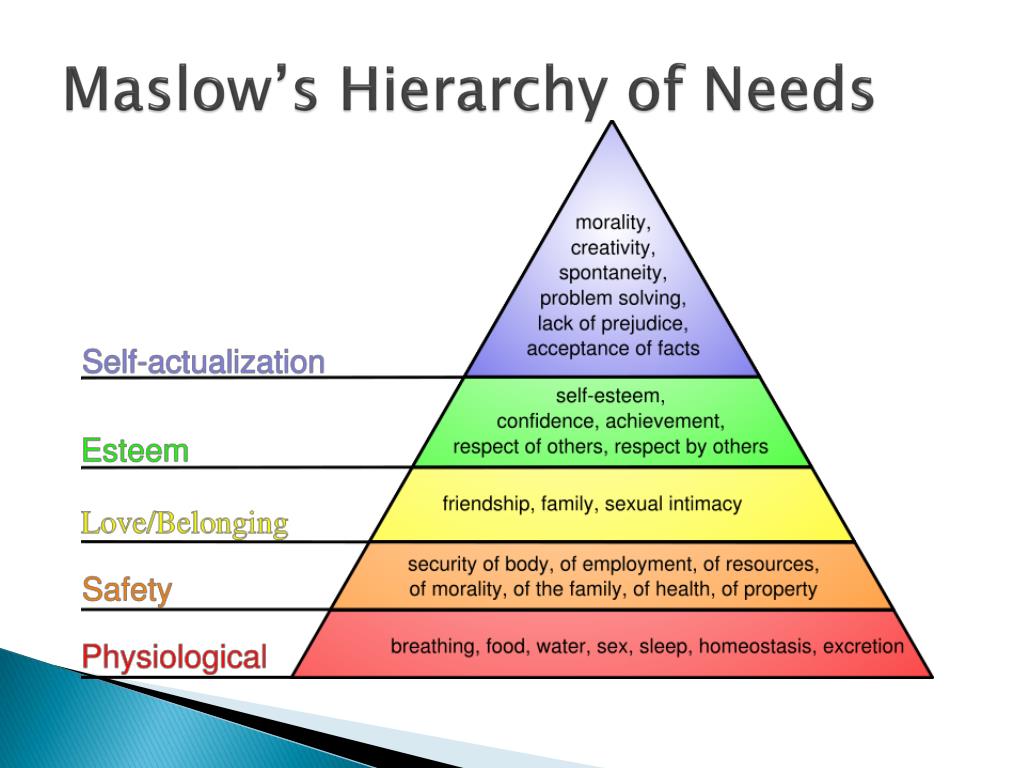 Order, predictability, and having a sense of control may contribute to this.
Order, predictability, and having a sense of control may contribute to this.
Safety can come from the actions of an individual or from their family or community. Depending on the person, it might include:
- living or working in a safe environment
- having a stable and sufficient source of income
- feeling protected from crime or abuse
- being in good physical health with no serious illnesses
Many people in the United States live in physically or emotionally unsafe environments. Feeling unsafe in childhood can affect mental health into adulthood.
Love and belonging needs
Love and belonging needs include the feeling of being connected to others, belonging to a group, and having secure relationships. People meet these needs through:
- making friends
- giving and receiving affection
- emotional intimacy
- feeling accepted by loved ones
Esteem needs
“Esteem” is admiration and respect. Maslow divided this part of the pyramid into two subcategories: the esteem a person has for themselves, or self-esteem, and the respect they desire from others.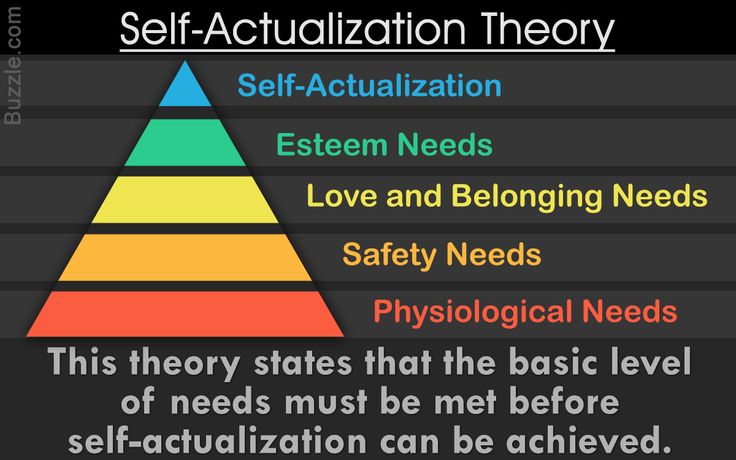
Self-esteem involves a healthy positive regard for oneself. The things a person needs to have good self-esteem include:
- self-worth, which is when a person feels they have value
- competency, which involves feeling skilled or knowledgeable
- dignity, which is feeling worthy of respect
- independence, which, in this context, means a person feels they can do things for themselves
Esteem from others may involve gaining:
- respect from peers
- acknowledgment for one’s achievements
- status or prestige
- fame or reputation
However, Maslow noted that the healthiest form of esteem that comes from others needs to be earned. Celebrity and fleeting recognition cannot fulfill a person’s esteem needs long term.
Self-actualization
The highest need on Maslow’s pyramid is self-actualization, which involves a person knowing themselves, understanding their full potential, and reaching it.
This is different from the esteem needs of the previous section.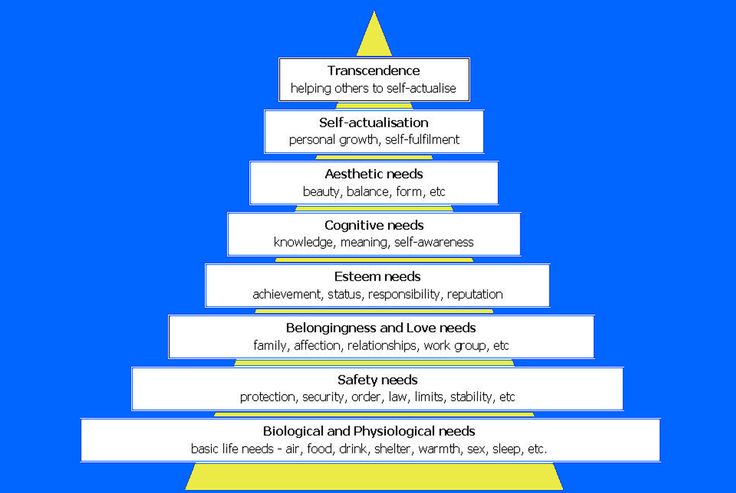 According to Maslow, people who become self-actualized find motivation in growth and possibility rather than trying to gain something they lack. They see things that they or their community could achieve, and they pursue them, whether or not it results in an external reward.
According to Maslow, people who become self-actualized find motivation in growth and possibility rather than trying to gain something they lack. They see things that they or their community could achieve, and they pursue them, whether or not it results in an external reward.
Other characteristics that Maslow felt self-actualized people possess include:
- a realistic perception of reality
- acceptance of imperfections
- flexibility and spontaneity in pursuing goals
- autonomy and responsibility
- consistent and strong morals
- appreciation for life
- creativity
Being self-actualized does not mean a person has no problems and is always happy. Maslow described self-actualization as an ongoing process rather than the end point of a journey.
People have applied Maslow’s hierarchy of needs to many fields of study, industries, and societal issues. Below are some examples:
Education
Education experts sometimes use the hierarchy of needs to help children reach their learning potential.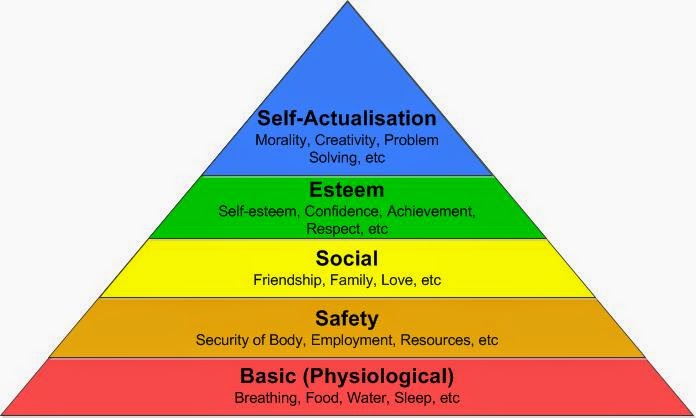
For example, in 2020, the Institutes of Education Science applied the theory to children receiving an education at home during the COVID-19 pandemic.
Children in this situation experience unique challenges and may feel unsafe due to the changes happening around them. The authors explain how caregivers can meet their physical, safety, social, esteem, and personal growth needs, even in a difficult situation.
Healthcare
In an older 2014 study, researchers argue that applying Maslow’s theory to the care of people in an intensive care unit (ICU) may have benefits.
People in ICUs tend to be oversedated and immobilized. The authors contend that although these measures are necessary for a minority of patients, they are not essential for the majority. In fact, they may have a negative affect on mental health and cognitive function.
To prevent this, the authors propose changing ICU care so that it considers overall quality of life and not just physical recovery.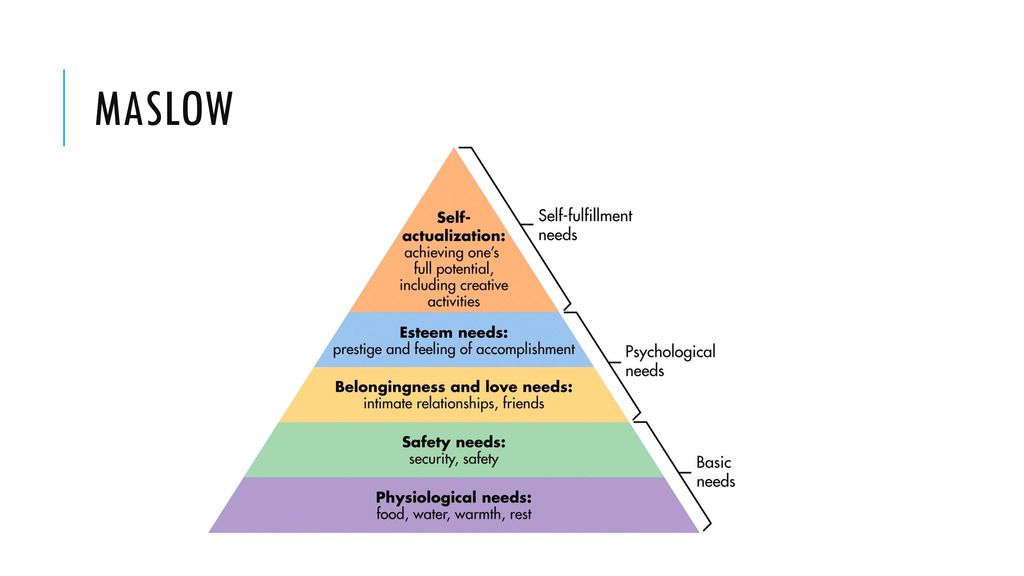 They advocate using less sedation and promoting mobility wherever possible.
They advocate using less sedation and promoting mobility wherever possible.
Unmet needs in each category can have specific effects, such as:
| Need | Effect if unmet |
|---|---|
| Physiological | • physical illness • hoarding behavior |
| Safety | • anxiety • psychological trauma |
| Love and belonging | • loneliness • antisocial behavior |
| Esteem | • feeling worthless • feeling invisible or unappreciated • low self-confidence • depression |
| Self-actualization | • boredom • cynicism • lack of meaning in life |
Maslow’s theory suggests that people’s needs at one level have to be mostly, but not completely, met before they can move on to the next level. He believed that unmet needs occupy the mind, preventing the pursuit of needs higher in the pyramid.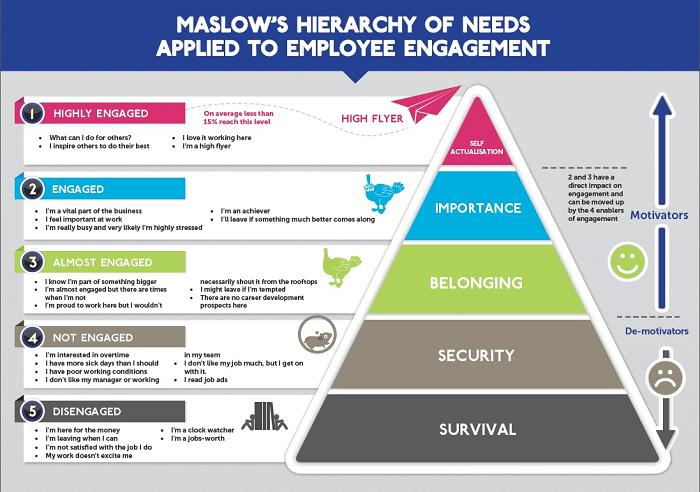
Thus, according to the theory, if a person is endeavoring to address their basic physiological and safety needs, they will not be able to seek higher needs for love, esteem, and self-actualization.
Below are some criticisms of Maslow’s theory:
The order of needs within the hierarchy is arbitrary
A 2015 study notes that one criticism of Maslow’s theory involves the order of needs within the hierarchy. Some critics say that while it is logical to put physiological needs first and self-actualization last, people do not necessarily pursue or obtain the needs in this order.
For example, some argue that a healthy relationship with oneself is an important requirement for having healthy relationships with others. Maslow himself met people who valued self-esteem more than love.
However, Maslow did not consider the exact order of needs to be rigid.
Self-actualization is not linear
In his early work, Maslow argued that a person could only self-actualize once they had met their basic needs.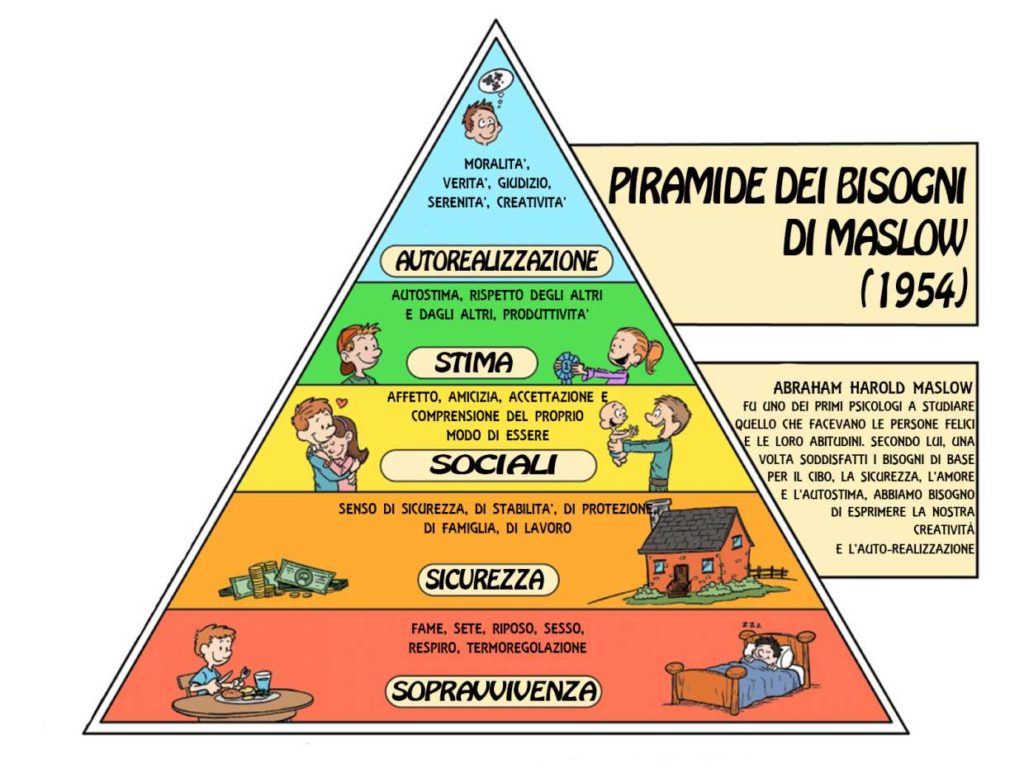 However, an older 2015 paper notes that, sometimes, not being able to meet one’s basic needs helps people identify their self-actualization goals.
However, an older 2015 paper notes that, sometimes, not being able to meet one’s basic needs helps people identify their self-actualization goals.
For example, a person may have a stable career for many years, fulfilling their safety needs. However, if they lose their job, they may realize that their old career was not satisfying. Needing another source of income might spur them to pursue the job they truly want.
Maslow also acknowledged that unmet needs could be motivation for self-actualization in his later work.
The self-actualization teaching is not generalizable
Another criticism of the concept of self-actualization is that Maslow largely based his ideas on the biographies of notable historical figures, most of whom were educated white men. As such, the traits he observed in these successful individuals may not apply to all people.
Maslow’s hierarchy of needs is a theory about what motivates and fulfills humans. The theory includes five needs, each of which forms one section on a pyramid.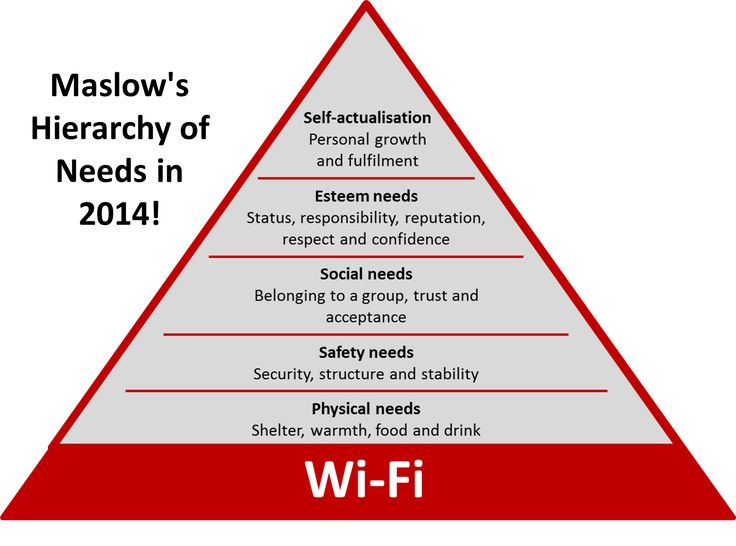 At the foundation of the pyramid are physiological and safety needs. In the middle, there are social needs, such as love and belonging. At the top are esteem and self-actualization.
At the foundation of the pyramid are physiological and safety needs. In the middle, there are social needs, such as love and belonging. At the top are esteem and self-actualization.
People have applied the hierarchy in a range of ways, including in education, child development, and healthcare. Psychologists can use it to understand things that may be contributing to mental health conditions, too.
However, there are some misconceptions and criticisms about Maslow’s theory. It is important to remember that the progression from one stage of the pyramid to the next is not necessarily linear.
Why Maslow's Pyramid Doesn't Work Anymore
Varvara Grankova
The popular idea of the famous psychologist Abraham Maslow is that we all have a hierarchy of needs: when basic physiological needs and the need for security are satisfied, we want love and a sense of belonging, then follows self-respect and prestige and, finally, the need for self-realization. But this pyramid was built more than half a century ago, and recently psychologists have come to the conclusion that it needs to be updated.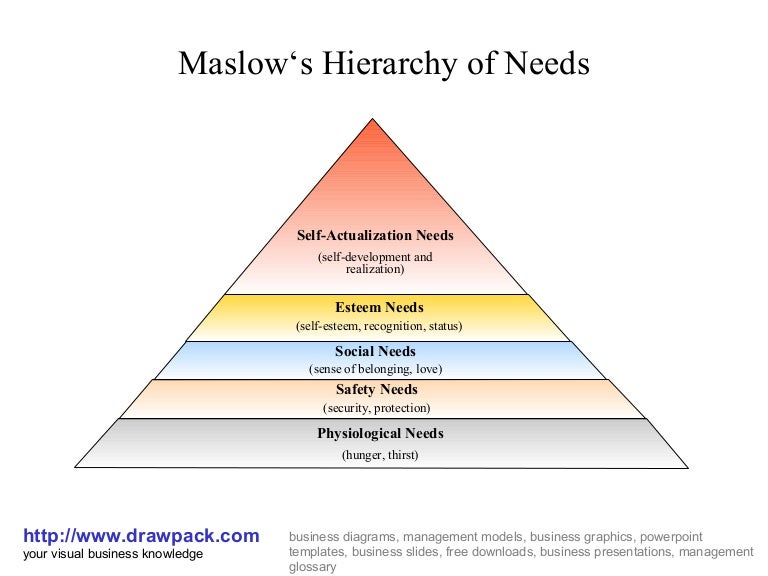
Of course, when basic needs are not met, it's hard to think about anything else. If you are paid pennies at work and you do not sleep at night, thinking about how to feed your family, you are unlikely to think about self-realization.
But Maslow created his pyramid at a time when many jobs in the manufacturing economy did not meet basic safety and security needs. Today, more and more companies operate in the knowledge economy and service economy. They do not just satisfy basic needs, but compete for the most comfortable working conditions (since 1984 through 2011, the companies that won this race outperformed competitors in terms of profit by 2.3–3.8% per year).
Survival is no longer a question. But, after the lower level of needs is passed, Maslow's pyramid falls apart. People do not always strive for love first, and then for prestige and achievement. And they don't wait until those needs are met before they start pursuing personal growth and self-expression.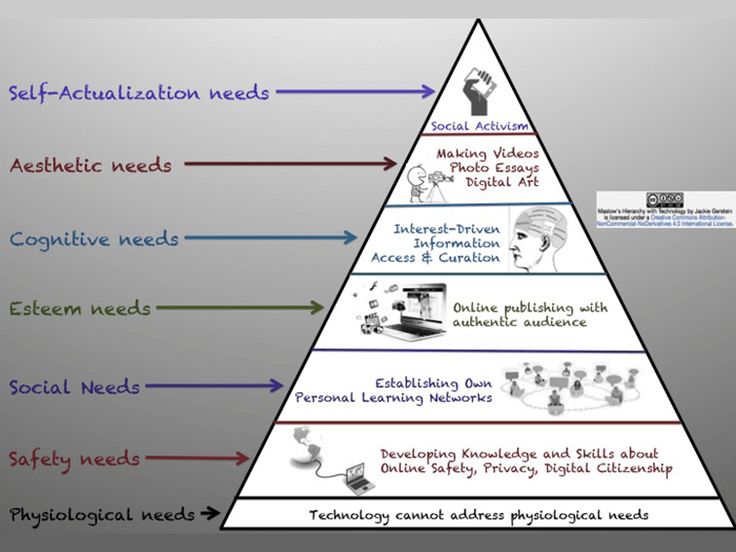
If Maslow were building his pyramid today from scratch, trying to explain what motivates people to work other than basic needs, what would it look like? We tried to answer this question on our Facebook page. Twice a year, we conduct employee surveys about what they value most in their work. After studying hundreds of thousands of responses, we identified three large groups of motivators.
The value of a career is in a job that provides independence, allows you to use your strengths and promotes learning and development. It underlies intrinsic motivation.
The value of the team is in people and a sense of respect, care and recognition. It drives our relationships and sense of belonging.
The value of the cause is in the goal: you believe that you are doing something useful, identify yourself with the mission of the company and change the world for the better. She is a source of pride.
These three groups make up the so-called psychological contract - undocumented expectations and obligations between employees and employers.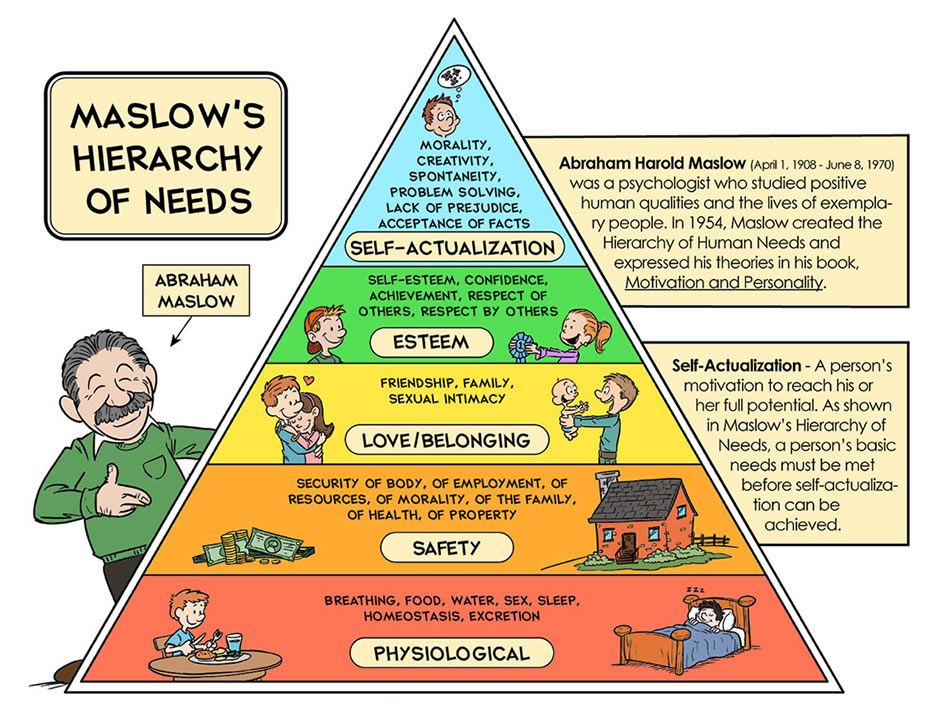 When the contract is fulfilled, people give themselves completely to work. But when it is violated, people experience less dedication, their results become lower.
When the contract is fulfilled, people give themselves completely to work. But when it is violated, people experience less dedication, their results become lower.
Previously, organizations built their entire culture around just one aspect: either a great career, or a friendly team, or a meaningful cause. But as it turns out, people want more. In our latest survey, more than a quarter of Facebook employees cited all three motivators as important. They need a career, a team, and a job. and 90% of our employees indicated at least two of these three motivators as important.
We decided to find out if certain motivators are characteristic of specific people or professions.
We found that priorities are similar across age groups. Contrary to popular belief that millennials care more about the meaning and purpose of work, we have seen that young people care a little less about work and a little more about careers than their older counterparts. People over 55 are the only group of Facebook employees for whom the cause means more than a career and a team.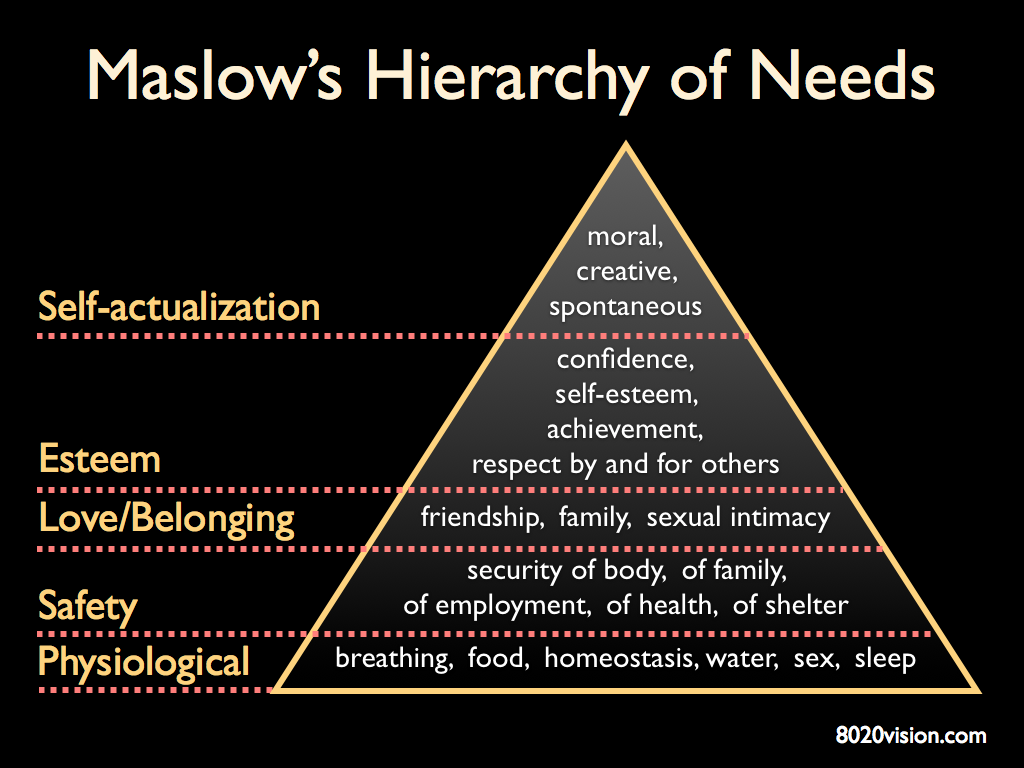 This is consistent with the fact that in the middle of life people begin to think more about the benefits to society and less about their own success.
This is consistent with the fact that in the middle of life people begin to think more about the benefits to society and less about their own success.
But in general, the difference between the age groups was negligible. And this is true not only for Facebook. In a nationally representative study of Americans across generations, Generation Y, Baby Boomers, and Generation X demonstrated the same core work values—and ranked them equally in order of importance.
We turned to professions. “If it weren’t for people,” wrote Kurt Vonnegut, “the world would be an engineer’s paradise.” As research has shown, this is not true. Our engineers care about the team and gave this motivator a score of 4.18 on a scale of 1 to 5. As with age, careers, teams, and jobs are equally important across professions. Sales and marketing specialists value careers and teams a little more than employees of specialized departments and technical services, but not by much.
Our data shows that most of us strive for a career, a good team and a meaningful cause at the same time.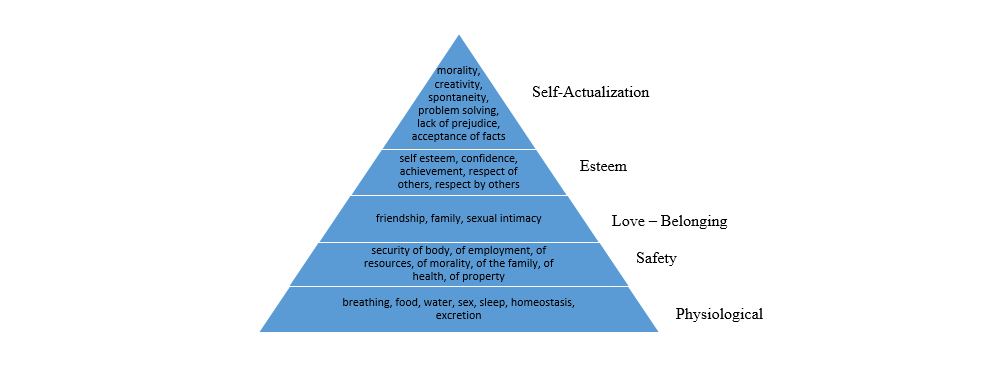 These are important motivators whether you are in your 20s or 60s, whether you work as an engineer or a sales employee, in Sweden or Brazil, Singapore or the USA.
These are important motivators whether you are in your 20s or 60s, whether you work as an engineer or a sales employee, in Sweden or Brazil, Singapore or the USA.
About the authors: Laurie Goler is Head of Human Resources at Facebook; Janelle Gale - Head of HR Business Partners; Brynn Harrington is Head of Human Resource Development at Facebook; Adam Grant is a professor at the Wharton School of Business
Original article here
Media news2
Advertising distracts? With a subscription you won't see it on the siteMaslow's pyramid of needs: main principles and structure
- Forbes Life
- Aliya Sabirzyanova Author
Almost everyone has heard about Maslow's pyramid, but much less people know what it is and what its structure is. Why, in the original theory of Abraham Maslow, there were no triangles at all, psychologist Aliya Sabirzyanova tells especially for Forbes Life
In 1943, the American psychologist Abraham Maslow published his article "The Theory of Human Motivation", in which he suggested that human behavior is based on a hierarchy of needs. The theory became popular and today is known to almost everyone as Maslow's pyramid. At the same time, Maslow himself never presented his hierarchy of needs as a pyramid; it appeared later, when the theory was adapted for business.
For example, in Keith Davis's book Human Relations in Business, hierarchy was presented as a ladder along which an employee moves, rising from the rank and file to leadership positions.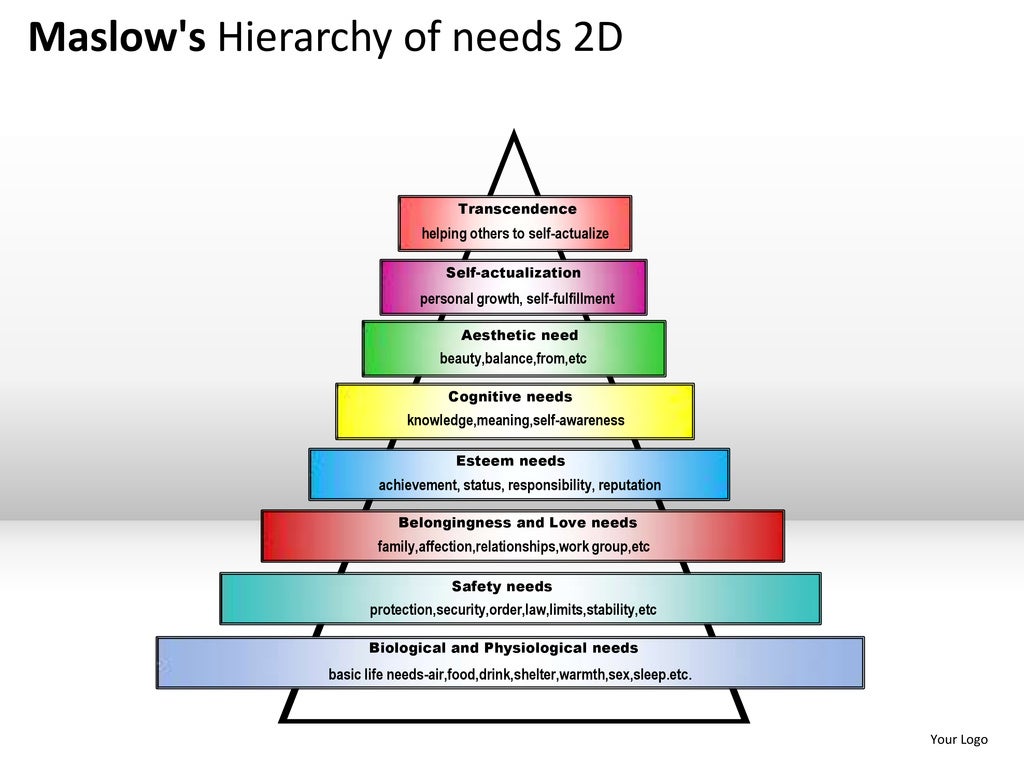 Davis made a significant change to Maslow's classical theory: he linked the need for self-actualization exclusively with self-realization, which, in his opinion, is possible as a result of work activity. And most importantly, he suggested that if a person moves up the career ladder, then his needs for recognition, respect and self-realization prevail, and if he just works in one place for a long time, then only basic physiological needs prevail. All this was categorically at odds with the theory of Abraham Maslow.
Davis made a significant change to Maslow's classical theory: he linked the need for self-actualization exclusively with self-realization, which, in his opinion, is possible as a result of work activity. And most importantly, he suggested that if a person moves up the career ladder, then his needs for recognition, respect and self-realization prevail, and if he just works in one place for a long time, then only basic physiological needs prevail. All this was categorically at odds with the theory of Abraham Maslow.
Related material
The pyramid was invented in 1960 by psychologist Charles McDermid, who was trying to find an answer to the question of how to achieve maximum employee motivation at minimum cost. He suggested that some employees are investing in creativity and striving for self-fulfillment, while others are concerned with basic needs - how to earn a simple living.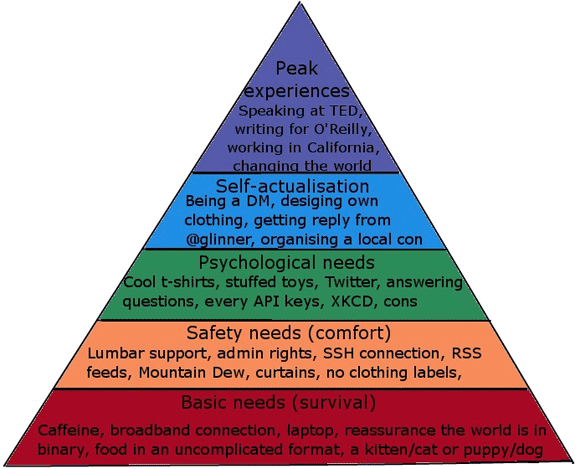 And, therefore, they need to be motivated in completely different ways. His assumption allowed companies to build a system of employee motivation, while significantly saving.
And, therefore, they need to be motivated in completely different ways. His assumption allowed companies to build a system of employee motivation, while significantly saving.
The interpretations of Davies and McDermid distorted the classical theory of the hierarchy of needs in many ways, which began to be perceived as a pyramid of needs. This undoubtedly made her very popular, but deprived her of the impetus for further scientific development.
In his works The Theory of Human Motivation and Motivation and Personality, Maslow formulated the basic principles of his theory: needs, namely the state of their partial and complete dissatisfaction, turn out to be the driving force of motivation. The needs themselves can never be completely satisfied, so a person is always motivated. At the same time, all of them are in a rigid hierarchy, and the satisfaction of needs from each new level is possible only after the previous ones are satisfied, albeit not in full.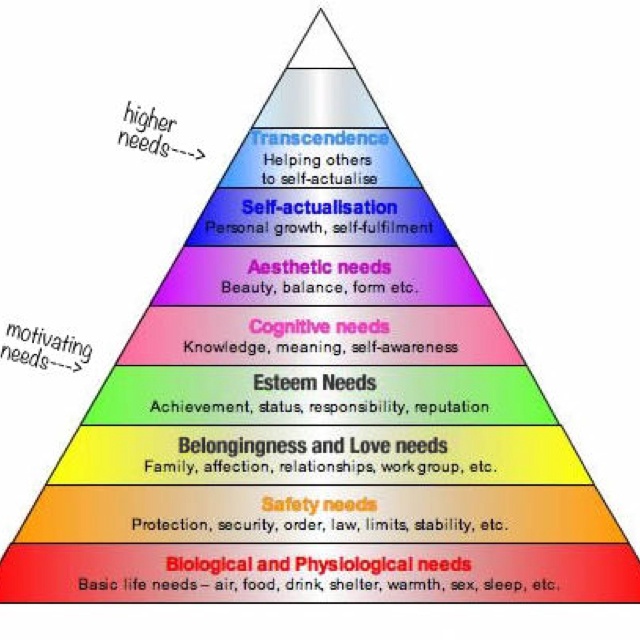
Related material
Initially, Maslow identified five needs, which included physiological needs, needs for security, love, respect and recognition, self-actualization. A few years later, the psychologist completed his theory by changing the need for love to the need for belonging, and added the need for knowledge and the need for aesthetics. Today, Maslow's classic pyramid looks like this:
- Physiological needs. A healthy organism primarily strives for self-preservation and providing for the needs that will ensure survival, namely in food, water, sleep, sex. According to Maslow, if they are not satisfied, then the motivation of a person is directed only to how to realize them. Everything else fades into the background. At the same time, regular satisfaction of physiological needs will help a person to concentrate on improving his life.

- The need for security. An orderly life, a stable existence, a calm work, the absence of worries and problems - all this refers to the need for security. According to Maslow, if a person lives all the time in anticipation of danger, even with completely satisfied physiological needs, he does not care about anything except the need to get rid of the feeling of anxiety.
- Need for accessories. According to Maslow's theory, this need is stimulated by the feeling of loneliness and the desire to share one's hopes, experiences, and successes with loved ones. What is important here is that a person is understood, heard, accepted as a partner, friend, colleague.
- The need for respect and recognition. Appreciation of merit, recognition of merit is a natural need of every person.
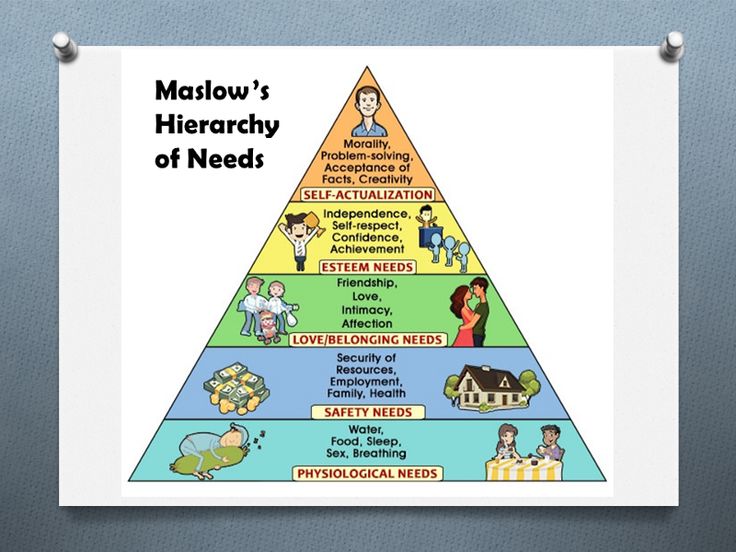 Maslow in his theory divided the need for respect from others and oneself into two groups. The first group is desires and aspirations that are associated with personal merits, successes and achievements. Recognition here brings a sense of independence, self-confidence and a sense of freedom. The second group is the need for recognition of prestige and reputation, expressed in respect from others. At the same time, Maslow noted that it is important to rely primarily on personal recognition based on objective merit, and not on public recognition (which can be flattering).
Maslow in his theory divided the need for respect from others and oneself into two groups. The first group is desires and aspirations that are associated with personal merits, successes and achievements. Recognition here brings a sense of independence, self-confidence and a sense of freedom. The second group is the need for recognition of prestige and reputation, expressed in respect from others. At the same time, Maslow noted that it is important to rely primarily on personal recognition based on objective merit, and not on public recognition (which can be flattering).
- The need for knowledge. Maslow believed that a person is naturally attracted by everything mysterious, unknown, inexplicable. What is known and does not raise questions is of no interest, it only brings boredom. The desire to acquire new knowledge, skills and abilities. The search for answers to philosophical questions about the meaning of life is born precisely from this need.
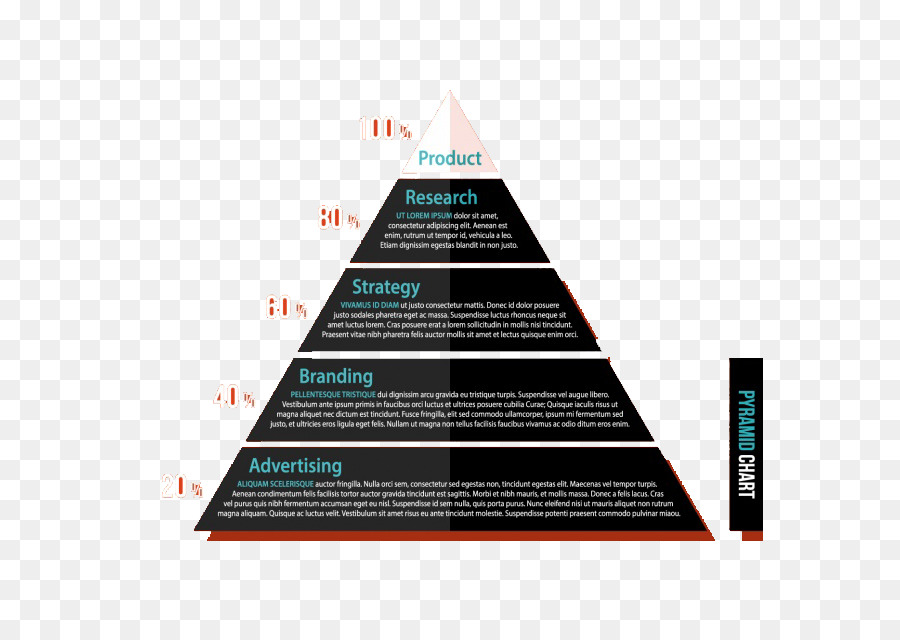
- Aesthetic needs. The ability to see the beautiful, to seek harmony through contact with music, theater, paintings, the beauty of nature. According to Maslow, it is the satisfaction of aesthetic needs that can cause intense emotional experiences in a person.
- The need for self-actualization. Self-actualization becomes the desire to realize potentialities, which is the strongest motive for personal growth. According to Maslow's theory, this is not a selfish need, but a humanistic desire to benefit society by creating the necessary “product” for it - a song, a picture, a poem, a machine, a program. At the same time, self-actualization will be an obligation to oneself to become what a person is capable of being.
Much later, in the works "Towards a Psychology of Being" (1962), "Far Limits of Human Nature" (1971), Maslow divided needs into lower (physiological and the need for security) and higher (everything else).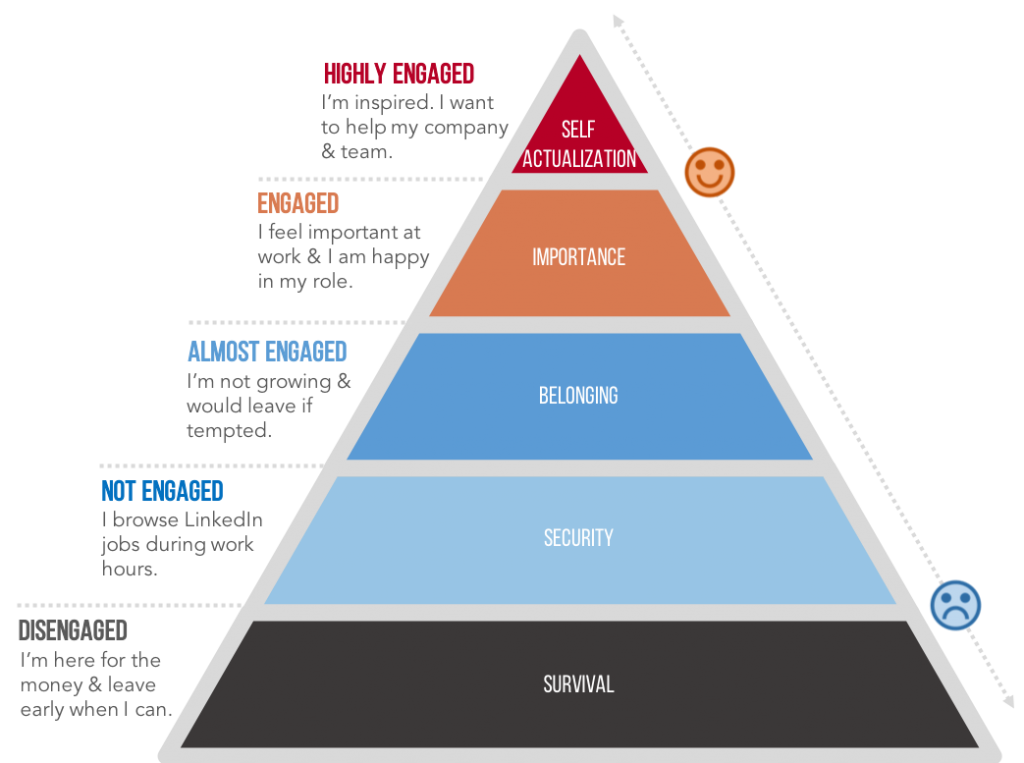 The lower needs are the same for almost all people, while the higher ones can be realized quite individually, and it is they that largely contribute to the formation of the value orientations of the individual.
The lower needs are the same for almost all people, while the higher ones can be realized quite individually, and it is they that largely contribute to the formation of the value orientations of the individual.
The psychologist considered self-realization to be the highest need, which, unfortunately, does not have a sufficiently clear definition. At the same time, according to Maslow's calculations, the need for self-realization reaches about 1-2% of all people. It is these changes, in which the author of the theory himself departed from a clear hierarchy, that today have become one of the reasons for the criticism that modern scientists subject Maslow's pyramid to.
Related material
The main reason for criticism of the theory is its rigid hierarchy. Many modern studies come to the conclusion that, of course, needs affect our motivation, but at the same time they are not in a hierarchical structure - for example: the need for aesthetic contemplation may exceed the need for security.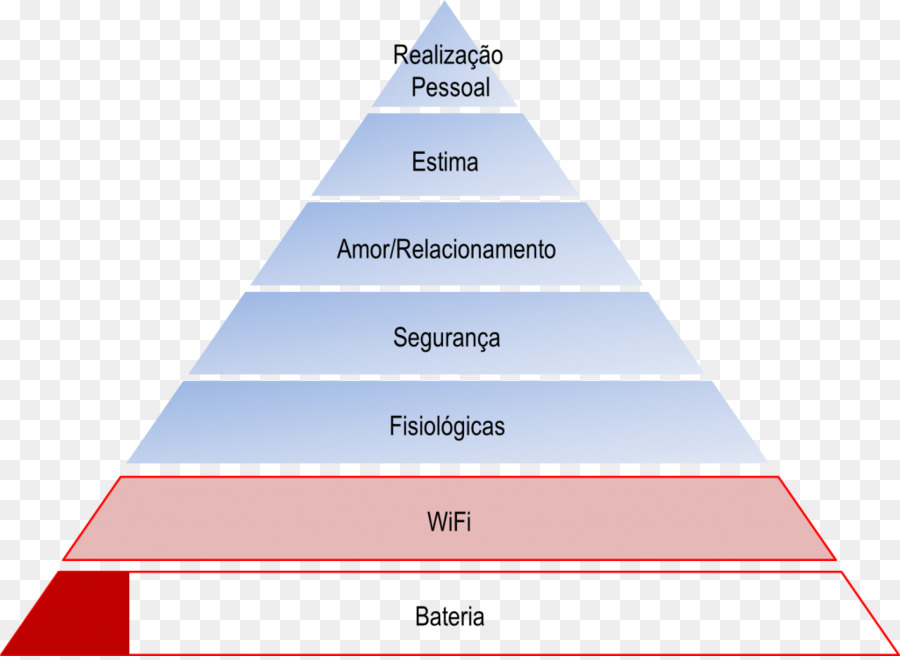
Another reason for criticism of Maslow's pyramid is the relevance of the needs given in the classical theory. So, in 2010, a group of researchers in evolutionary psychology proposed to modify the top of the pyramid and consider finding a partner, keeping a partner, and raising children as the highest needs. Another important reason for criticism is that the classical theory does not take into account cultural differences, which can largely affect the importance and significance of needs.
Despite criticism, Maslow's theory remains popular: they seek confirmation of it, refute it, rely on it. The reason is quite simple - the hierarchical model of needs was formulated quite clearly and understandably, it is easily perceived and reflects the main motives and aspirations of people. An absolutely innovative approach for its time should also be considered important.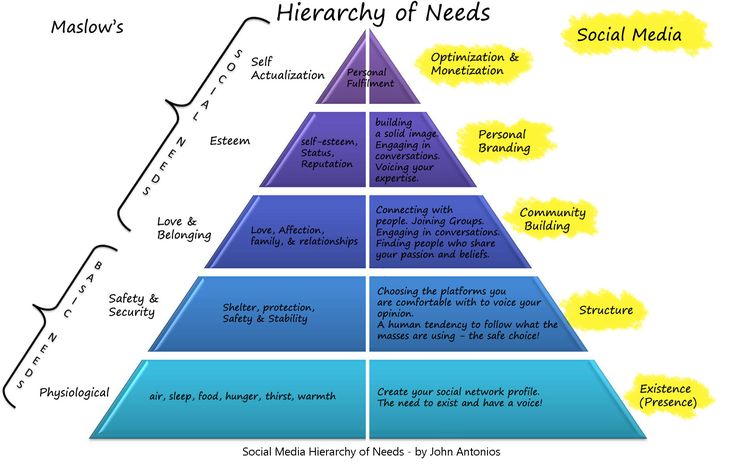 It was Abraham Maslow who helped form the humanistic direction in psychology, because in his theory everything positive and unique in human nature came to the fore.
It was Abraham Maslow who helped form the humanistic direction in psychology, because in his theory everything positive and unique in human nature came to the fore.
Maslow's pyramid is used in marketing and advertising - by determining the needs of the target audience, they develop support programs for staff on its basis. But we are talking more about references to Maslow's theory, rather than its classical reading.
Related material
The hierarchical pyramid can also be used for introspection, to notice and understand your needs. In modern psychology, they continue to talk about the importance of needs and their implementation. Thus, each school of psychotherapy has a certain pool of needs that it works with. For example, schema therapy focuses on emotional needs (attachment and security; independence, competence, and identity; freedom to express feelings; spontaneity and fun; self-discipline and self-control).

